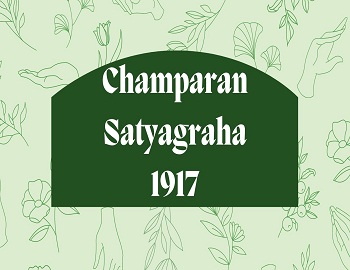Gupta Art and Architecture:
The three closely allied arts of architecture, sculpture and painting attained a high level of excellence during the Gupta period. The period witnessed the culmination of earlier tendencies and ushered in a new style in the movement of architectural types and forms.
The period witnessed the culmination of earlier tendencies and ushered in a new style in the movement of architectural types and forms. Numerous temples made entirely of brick have been found from Bhitargaon in Kanpur district to Paharpur in Bengal and Sripur in Madhya Pradesh. The brick temple at Bhitargaon is beautified with friezes of moulded bricks. The temple has a pyramidal roof and its outside walls are decorated with terracotta panels, depicting mythological scenes. Stone temples of the time are few in number. These small unimposing structures with square sanctuaries, small porticoes and flat roofs were executed excellently as the stones were held together without any kind of mortar. But the temple architecture of the later Gupta period exhibits a new style with high Sikharas (pinnacles) and extensive mandapas (halls), the best specimen of which can be seen in the Dashavatara Temple at Deogarh which has a Sikhara of about 120 centimetres. It stands on a raised plinth, occupying the central square of the open terrace. Its doorway is beautifully carved and decorated and in front of it was a shallow porch which later developed into a pillared portico. Few monuments can equal such a high level of workmanship imbued with supreme feeling as the Gupta temple at Deogarh. In the history of temple architecture, the Gupta period is the formative and creative age heralding the two important styles, Nagara and Dravida which characterise the medieval temples of India.
Of the numerous stupas built during this period, the stupa at Mirpur Khas in Sind, the Dhamekh stupa at Sarnath and two stupas at Rajgir deserve special mention. The Dhamekh stupa is 39.5 metres in height and has four inches at the four cardinal points for the Buddha images.
The rock-cut caves, with novel ornamentation and designs, were also excavated during this period. The chaityas and viharas at the Ajanta and Ellora caves in Maharashtra are the best specimens of cave architecture during this period. The most characteristic feature of the chaitya is its emphasis on the colossal awe-inspiring image of Buddha seated between two standing attendants. The vihara was planned in the form of rows of cells around a central court. The other examples include rock-cut caves at Bagh, Khandagiri, Udayagiri and Undavalli. Ajanta Caves are also famous for beautiful designs on the pillars and fine paintings on the inner walls and the ceilings of the caves.
The characteristic features of the Gandhara and the Mathura schools came of age during this period and as a result, some of the best known sculptural pieces were produced under the Guptas. The figures of Buddha show the peak of perfection with a unique combination of grace, refinement, delicacy and repose. However, sculpture art was not only restricted to producing Buddha statues. The high quality was also maintained while producing the images of Brahmanical gods like Vishnu and Shiva.
The crowning achievement of Gupta sculpture is noticeable in the numerous seated and standing images of the Buddha and Bodhisattvas from Sarnath, where, under the influence of the Mathura tradition, a distinct school of art flourished. Two of the greatest masterpieces of this age are the standing Buddha from Mathura and the seated Buddha from Sarnath. The statue of the standing Buddha at Mathura which is made of red sandstone dates back to the fifth century CE. It is 217 cm high. The face has an expression of compassion and the halo behind the head is richly carved. The pose and gesture invoke feelings of adoration and deep reverence. The most famous of the Gupta sculptures is the icon of the Buddha in Sarnath; “turning the wheel of law”, or preaching his first sermon surrounded by a large and ornate halo and flanked by two small celestial figures, the Buddha sits majestically; his fingers form the dharmachakra mudra, which indicates that he is preaching. Unlike the rigidity of the contemporary Mathura works, the Sarnath images depict delicacy of form and a relaxed attitude. His face is that of a young man with half-closed eyes and a slight smile. It appears from his serene face that earthly pleasure has been transmuted into inner joy. The statue is made of sandstone and its surface is smooth and shining.
Perhaps the most impressive of all Gupta sculptures is the Great Boar, carved in relief near the entrance of a cave at Udayagiri, near Vidisha. It depicts an incarnation of Lord Vishnu who became a mighty boar to rescue the earth from destruction. It conveys the impression of a great primeval power working for good against the forces of chaos and destruction.
The art of painting reached a high level during this era. The best paintings are found in the Ajanta, Badami and Bagh caves. These cave paintings mainly depicted Jataka stories from the life of Buddha. In Ajanta, the surface of the caves was first covered by a mixture of clay, cow dung, finely pulverised trap rock and then a thin coating of fine white plaster. The ground thus prepared was kept soft and moistened. The design was first sketched on this surface in dark brown or black and then painted. The designs were varied and graceful. The paintings at Bagh are quite like the Ajanta paintings. They also depict scenes from Jatakas.
Inmuerable terracotta has been found in Gangetic valley and Western India which represents a different tradition of Gupta art. Terracottas, in contrast to sculptures and paintings, are not very polished and in some cases, even final touches are not given. However, their artistic value is indisputable.
The Gupta coins are properly shaped from the viewpoint of an art historian. The coins of Chandragupta I depicts the ruler standing with his queen Kumaradevi and on the reverse Durga seated on a lion. Samudragupta has been shown in different poses as an archer with his queen Dattadevi in a slaying position, playing on a lute and others. These are the best specimens of indigenous numismatic art.
The chief characteristics of Gupta art are refinement, simplicity of expression and religious virtuosity. Instead of being tied to the dead weight of conventions, it struck a mean between the exuberance of the earlier schools and the bizarre symbolism of medieval art. The intellectual element dominates the Gupta art and leaves behind an ineffable joy sustained through its harmonious blending of beautiful objects with aesthetic taste. Rooted in the Indian soil and showing tremendous vitality, the Gupta art influenced the arts of Central Asia and the neighbouring islands- Java, Sumatra, Cambodia and other islands in the east.









Comments (No)